1. Getting Acquainted + Best Time To Visit
So you want to travel to Vietnam. If you have never visited Vietnam before, I find the best place to start is by getting acquainted with its geography. Vietnam is very long. Wiki says it’s about 1650 km long– which quite honestly meant nothing to me until I started touring the country on a motorbike. Then I realized, oh… covering ~100 km alone would take me almost half a day and a lot of butt hurt, but more on that later. All you need to know for now is, the country is really big.
MAP OF VIETNAM
As you do your research, you will quickly find travel blogs breaking Vietnam into three parts: North, Central, and South. Each section has their own distinct identity, culture, weather patterns, accent, cuisine, etc.
North Vietnam: Home of the Communist Party of Vietnam. Known especially for Vietnam’s capital, Hanoi, and destinations like Sapa, Halong Bay, Ninh Binh, and Phong Nha Khe Bang.
Central Vietnam: Contains some of Vietnam’s popular destinations like Hue, Hoi An, and Da Nang. This stretch also belongs to the best part of the Ho Chi Minh trail, for riders out there. Towns are widespread and often more laid back. Traffic is more manageable and I have found people to be friendlier, but that’s just my experience.
South Vietnam: Affluent, busy, and the place where younger generations wants to be. Home of HCMC, Cu Chi Tunnels, and Mekong Delta. Climate is more tropical which impacts cuisine and (according to locals) work ethics. People are more laid back the more south you go.
All over Vietnam, you will find physical and cultural remnants of the Vietnam War (or from the Vietnamese end, “The American War”). It is mind-blowing how much the country has recovered given that the war only ended in 1975. Personally, I don’t think you can fully understand and appreciate the current Vietnam until you learn about its history. My husband, Mike, recommends Ken Burn’s documentary series, “The Vietnam War,” for anyone interested.
WEATHER
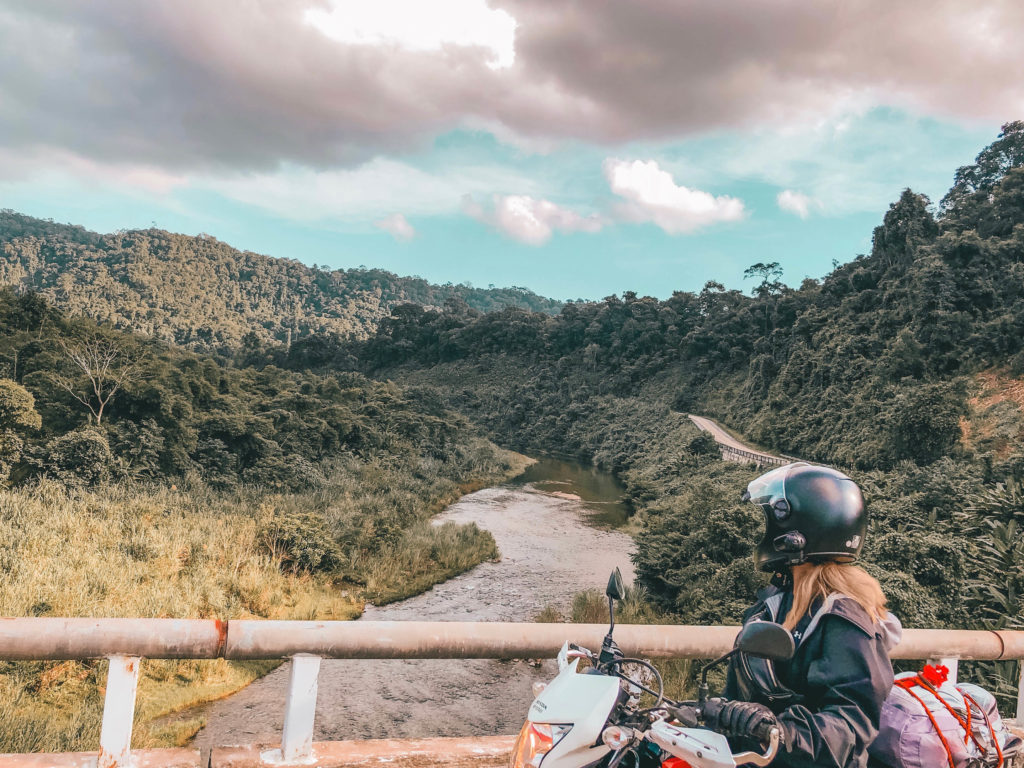
Due to the large, or rather long geography of the S-shaped country, weather can vary drastically from north to south. It is easy to google when it is the best time to go. In general, high season starts at the end of typhoon season and spans over the “winter” months (December – April). We went in November and it was perfect. Plane tickets were still cheap, the weather was starting to cool, and there were minimal tourists!
Keep in mind for those who come from cooler climates, that there is no such thing as winter in Vietnam. It’s a tropical country and people are still running away from the sun in the deadest of winter.
TRAVELLER’S VISA
A traveller’s visa is required from most countries. You can either apply online or in-person at your nearest Vietnam Embassy. For Canadians out there, we applied online via Vietnam Embassy and it took about 2 weeks to process.
2. When You Arrive
TERMINOLOGY TO KNOW
Saigon vs. Ho Chi Minh: Saigon is the former, yet popular, name for Ho Chi Minh City proper (HCMC). When locals say Saigon, they are referring to the central part of HCMC. HCMC encompasses Saigon and extends further out.
Homestay vs. Hostels: Travel hosts like to use these two terms interchangeably. Traditionally, a homestay is owned by a family in a rural area while hostels are affordable lodging establishments. In Vietnam, you can either get a hostel owned by a family or an establishment called a homestay.
Motorcycle vs. Motorbike: They’re the same thing, just don’t get it confused with scooters. In North American, we say motorcycles. In Vietnam, they say motorbikes. Scooters are smaller vehicles that are great for city riding, but NOT for touring.
SIM CARD
There are 4 major cell networks in Vietnam: Viettel, Mobifone, Vinaphone, Vietnamobile. The first three being the most popular. Simply put, getting a SIM card is easy as they are sold practically everywhere. It should cost you $5-10 USD depending on your needs, but since they’re so cheap, you should just go for the best. Travellers are recommended Viettel since they have the best coverage. We found this to be true when we went off-grid.
If you’re planning on purchasing a SIM card at the airport (which I recommend), make sure to check store hours beforehand. When we landed at 10:40 pm on a Wednesday night, all stores were closed except for this sketchy SIM card booth before customs.
Thuymi [AdventureFaktory] does a better job sharing all you need to know about buying a SIM card in Vietnam.
CURRENCY EXCHANGE
To get the most competitive rate, the best places to go are actually jewellery shops around town. Just be aware that it is technically illegal for them to exchange money, although it is widely known that these shops bribe the police to turn a blind eye.
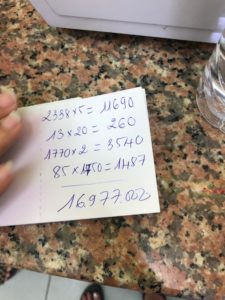
My suggestion is for you to exchange a small portion of your money at the airport for immediate use. Once you find the time, exchange the rest of your money at these shops. They will never advertise it broadly, but any jewellery store that displays a lot of gold in their storefront will be able to exchange money for you.
[ Image: beware of handwriting! It took me forever to figure out that was a “1”! ]
There’s a couple of them at the intersection of An Duong Vuong Road and Yet Kieu Road, near the Minh Tam Bus Company.
Do some homework and estimate how much money you can exchange in advance. These shopkeepers work very quickly (if you’re unfamiliar with Dong, it can get confusing fast). A local will have a better chance of getting a better rate. They definitely accept both USD and CAD.
GETTING AROUND THE COUNTRY
There are a number of ways to explore the country.
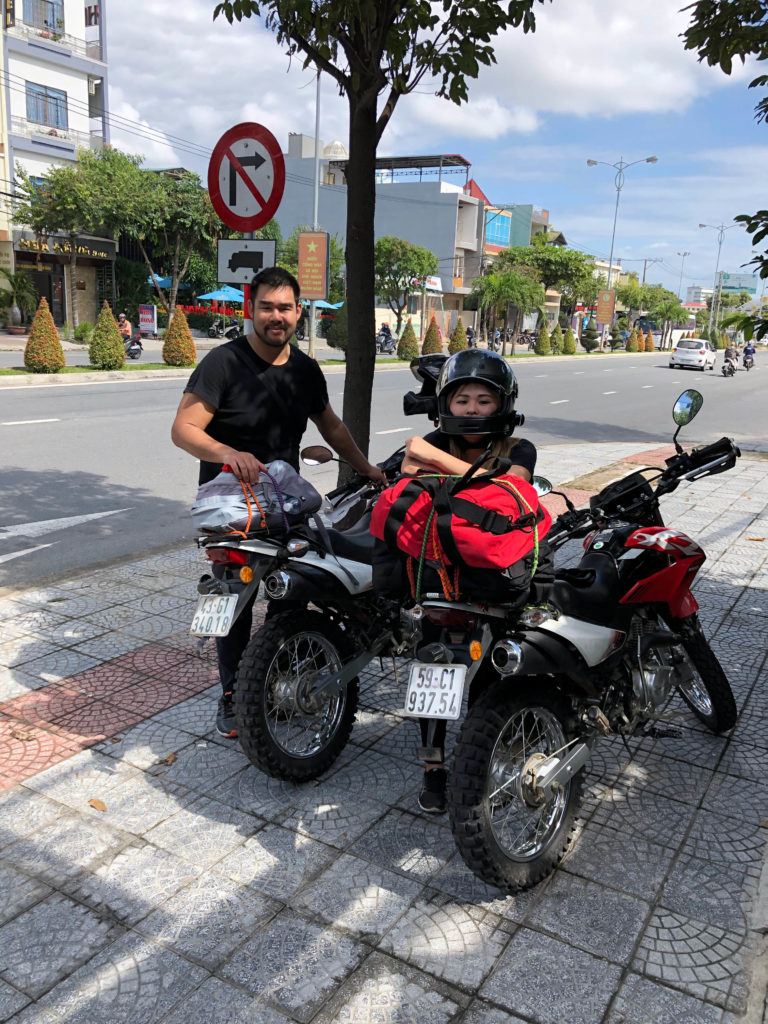
All smiles after picking up our bikes 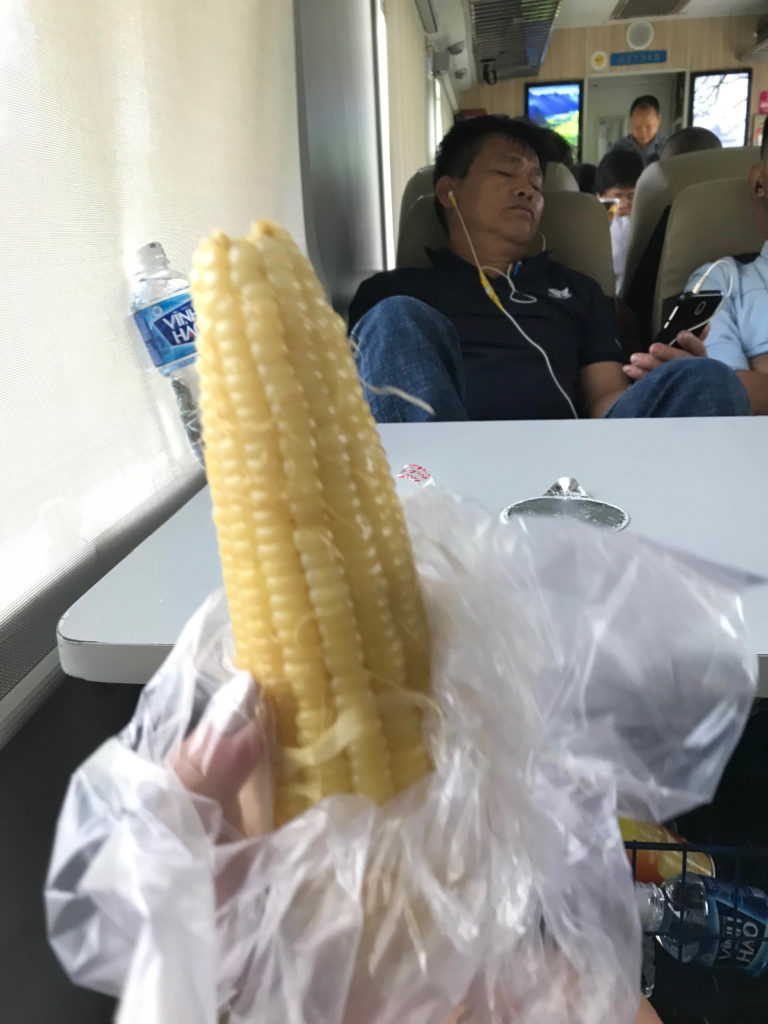
Self-explanatory corn on a train 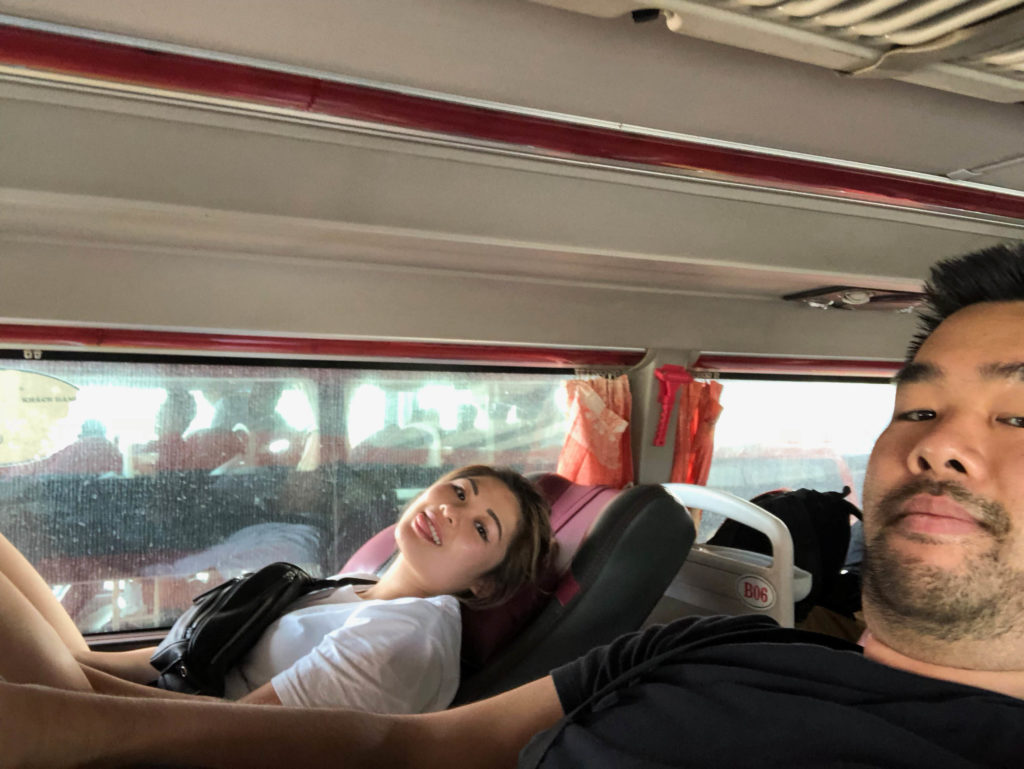
Vietnam’s version of a double decker bus– every row requires you to lie down
Bus: Vietnam has an extensive network of bus routes running day and night, all over the country, city to city. This is the most affordable way to travel but also the most time consuming and uncomfortable. There’s also not much views to see since you’re often on the highway.
That said, various parts of Vietnam can only be accessed by bus, cars, and motorbikes.
Train: Like buses, there is also an extensive network of day and night trains running all over the country. Trains are ideal methods of transportation because they are cost and time-saving. I also found it quite comfortable and the views were awesome.
Airplane: There are many flights operating within the country with the biggest airlines being Jetstar and VietAir. Flying obviously costs more than the first two options, but for what it is, it is actually quite cheap. You can get a flight from Hanoi to HCMC for about $50-100 USD/person.
In my opinion, flying to another city can bring the most value if you want to experience the whole country in a short amount of time. Checking into flights isn’t that big of a hassle, but be aware of getting stuck on the plane during bad weather. This happened to our friends. The unfortunate thing was, even though the plane never left the ground, the flight crew had them detained with no food or drinks for 8hrs until the weather got better!
All-Inclusive Tours: Not my ideal way of travel so I don’t have much information, but there are a lot of companies out there offering excursions to cities and sites.
Motorbike: A favourite among DIY travellers and my preferred way of traveling Vietnam. Riding a motorbike across Vietnam is an adventure in itself. If you have money, time, and dedication to do it, then you absolutely should. It can get dangerous and there are a lot of preparations to be made, but when you’re on a motorbike, Vietnam is your oyster. You will get to go off the beaten path, see local countrysides, and have better access to an authentic experience.
Stay tuned for Mike’s in-depth overview of everything you need to know when it comes to renting a motorbike in Vietnam!
TRANSPORTATION WITHIN A CITY
Downloading the “Grab” app beforehand will do you well in big cities like Ho Chi Minh or Hanoi. Grab is their version of Uber, or more specifically, a transportation service company that bought the rights to use Uber’s infrastructure when Uber was still in Southeast Asia. I highly recommend it. It will save you the hassle of relaying directions if you don’t speak the language and give you a peace of mind that you won’t get scammed. They also have a “send picture” function in case your driver can’t find you.
If it comes down to it, you can always hail taxis off the streets. Just practice standard safety measures like pinning down the price before you close the door, speaking up if you feel like the driver is going off-route or is overcharging you, and having a map open to track your car ride at any given time.
❗CROSSING THE STREET
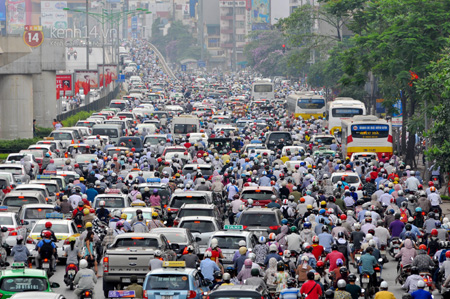
This section deserves its own little feature. In our opinion, cities like HCMC are quite hard to navigate by foot. Not only are they dense, there is never a moment without Vietnam’s signature traffic. It might sound silly, but one of the first things you need to learn in Vietnam is how to cross a street. When you get there, you’ll understand.
Long story short: Vietnamese people do the bare minimum when it comes to obeying traffic laws. They even get mad if you abide too much! It is not rare to find people crossing red lights, going in the opposite direction, riding on sidewalks, etc. In addition, there are a lot of people in Vietnam. Put two and two together, and you get a lot of people who don’t obey traffic laws!
The cardinal rules to remember when crossing a street is: Don’t Stop. Be Predictable. Look at the direction of oncoming traffic, establish eye contact with those approaching you, and start walking when there’s an opening. People drive/ride very slowly throughout cities and will pause if they expect you cross. If they see you hesitate and/or stop, they will assume you don’t want to cross and keep going.
FOOD SCENE
You will hear me apologize over and over again, but researching dining options is not my forté. What I can tell you is restaurant hours in most parts of large cities are great. You can get banh mi at 5-6 am to a bowl of pho at 12 am. There are restaurants everywhere. The questions are, is it overpriced? Is it good?
Food in Southern Vietnam is quite sweet. Due to its vibrant tropical plantations, southerners like to infuse fruits and sugars into their meals. As you travel up north, food gets less sweet and more spicy.
ACCOMMODATION
Vietnam has some of the cheapest accommodations in the world. We love booking through Agoda. One cool thing we learned about Vietnamese homestays/hostels is that hosts like giving guests free room upgrades if there’s a bigger room available. Smart on their part, because it makes the experience all the more better.
Everyone’s needs are different, but there’s some points to keep in mind when choosing the right accommodation for you:
- Location: You can save a lot of time just by staying somewhere close to an attraction.
- Restaurants: Is there food nearby? Does your homestay offer home-cooked meals? It’s not hard to tire yourself out from site-seeing. The last thing you want to do after a full day of travel is to go somewhere far to eat. It’s also not a bad idea to end the day by relaxing at a local restaurant/bar with a bottle of beer in hand.
- Tours: Do they have tour packages? It’s quite common for accommodations to have their own tour packages to attractions nearby.
- Bike Hire: In some locations, traveling around by bicycles or motorbikes may be the cheapest and best way to get around vs. hiring a private driver. Some places offer free rentals while others require advanced booking. Make sure to check prices in advance.
- Air Conditioning/Mosquito Nets: This really depends on location and time of the year, but in general, Vietnam is a tropical country. Whether you run hot or cold, it’s always a good idea to check the condition of your accommodation so you won’t end up melting into a puddle or catching a cold overnight.
- Laundry: A hotel with a laundry service on-site is always good.
I credit Emily [Wonder-lush] for this section. She does an excellent job explaining why choosing to live in homestays may not only be the best way to experience Vietnam authentically but a great way to support the nation locally.
POWER ADAPTORS
Be sure to double check whether your power adaptors work in Vietnam. Over there, standard voltage is 110 / 220 V and standard frequency is 50 Hz. Your country may be different! On the bright side, you can find power adaptors quite easily in convenient stores should you forget to bring one from home.
Visit Power Plugs Sockets for more information!
CONTACT SOLUTIONS
Contact solutions are one of those things that you don’t really think about until you run out. If you remember, kudos. For us, we thought they’re easily accessible like power adaptors but we were so wrong. You can’t find them anywhere in drugstores or convenient stores. Instead, they can only be bought through eyewear shops (duh). I know backpackers like to travel light and buy toiletries as they go. Just a heads up that contact solution should not be one of those items!
SCAMS SCAMS SCAMS
This really depends on how you choose to look at it, but it’s a fact that foreigners are often treated differently than locals when it comes to purchasing a service or good. To clarify, I’m not talking about a shopkeeper inflating the price of goods, fully expecting to bargain. I’m talking about instances like a street vendor quoting a foreigner a higher price for a banh mi (Vietnamese sandwich), only to lower the price for a local standing next-in-line. Hostels charging different laundry service rates depending on the colour of your skin. Taxi drivers overcharging and/or taking roundabout paths to get to your destination. The list goes on.

At the end of the day, I don’t blame anyone for feeling scammed or cheated when it happens. I’ve certainly felt that way a couple of times when I was in Vietnam. For the purpose of self-protection, here are some tips my OneTrip tour guide told me on my first day there:
- It’s helpful to run some trial and errors, like buying the same item at different shops the first couple days you arrive to get a sense of how much things are worth
- Having a calculator on hand is useful during money transactions. The calculator is not there for you to crunch numbers, but a communication tool when there’s a language barrier
- The smallest, most common Vietnamese Dong is 1000 VND. That’s $0.04 USD. On a day to day basis, you will mostly likely be operating with 10,000 – 100,000 VND. The quicker you familiarize yourself with their currency, the faster you’ll figure out how much an item/service is worth, and the less pressure you feel to agree to a price at any given situation
- Vietnamese vendors rarely list the price of their goods in public. I found this to be the case for food as well
- When asking for the price (“bao nhiêu”, pronounced “bow neew”), Vietnamese vendors have a habit of telling you only the first two-three digits of the total. [ For example, an average 1L bottled water costs 10,000 VND. The vendor will only say, “10.” Sometimes, they say it assuming you know it cost 10,000 VND. Other times, they are hoping you mistake the price as 100,000 VND. A good safety measure is to always type the price you think you’re going to pay, starting in the thousands. In this case, type 1000 on your calculator and if you’re wrong, they will type the right number for you. ]
I want to end this section by saying, I hope people don’t get too caught up with scams, because it’s easy for experiences to be ruined that way. I remember being so mad in Mui Ne after being scammed, and it ruined a really good day. It’s true that scams are rampant in Vietnam, but as long as you have some sense of what things are worth and communicate the price properly before committing, you should be fine.
FYI: Vietnamese people can get scammed too if they’re not from the same region as the vendors due to political tension between the North and South. Vietnam’s communist party and police department are really corrupt and often take advantage of their citizens. Knowing this + some Vietnamese history may help you develop compassion and bounce back from being scammed. A lot of locals are obligated to pay bribes to the government for no reason (authorities can make up random reasons to charge someone) and so a lot of the citizens have no choice but to do everything they can to survive. Visiting the country as a tourist automatically puts you in a place of luxury, even if you’re a budget traveller. In the grand scheme of things, these scams aren’t the worst things in the world, especially if you’re from North America. The difference you’re looking at may amount to just a couple of dollars.
3. Next Up – Planning Your Itinerary

I hope this introduction was useful in helping you get started! Everything was learned through the internet and being in Vietnam in person. I wanted to write this, because it was something I wish I had before I went. I didn’t always know where to start or what questions to ask, and this article would’ve saved me so much time.
If you liked what have you read, leave a comment and head over to my itinerary– 2 WEEKS IN VIETNAM 🙂
Cảm ơn (Thank you),
Demi
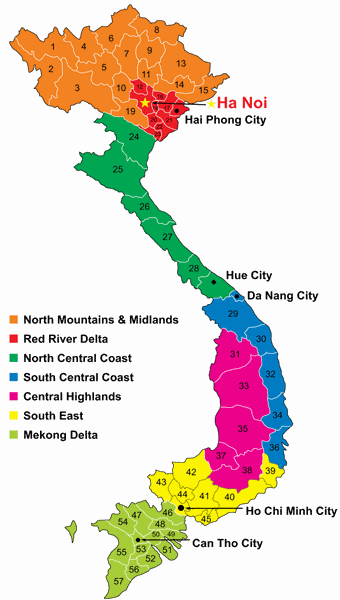
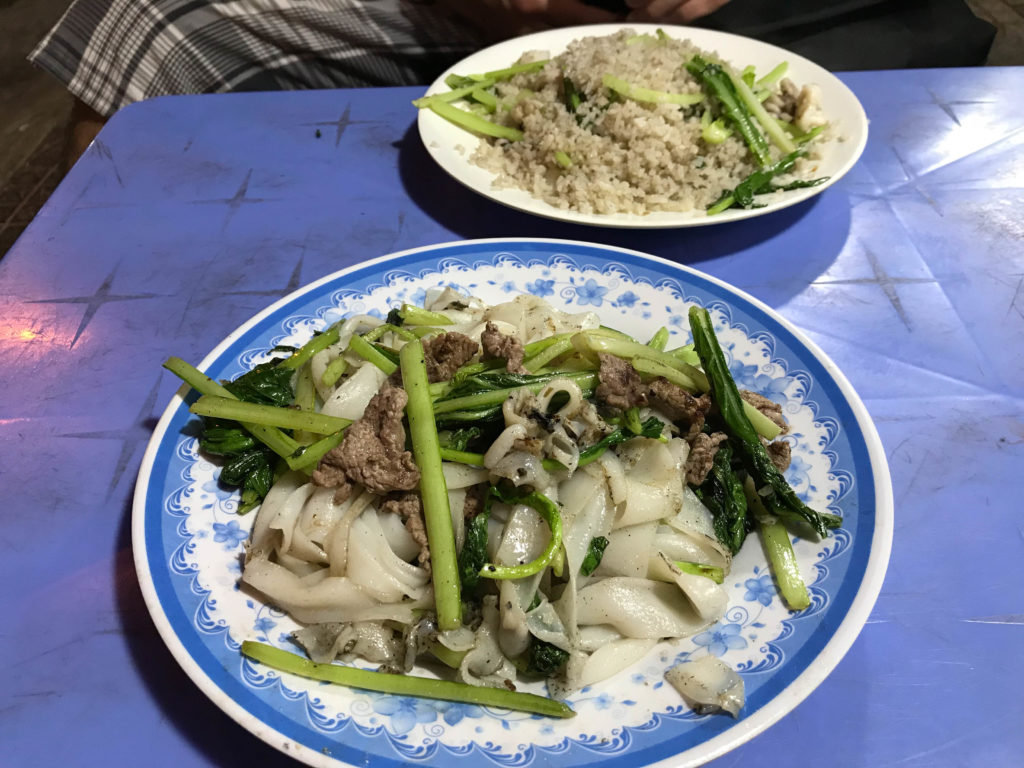
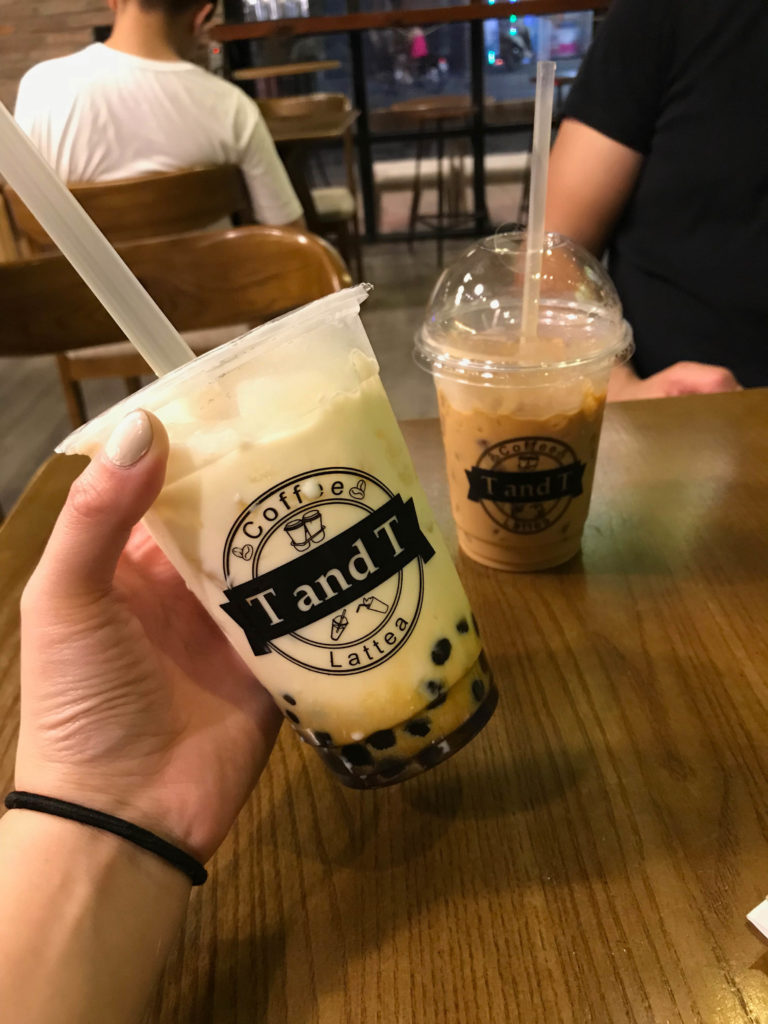
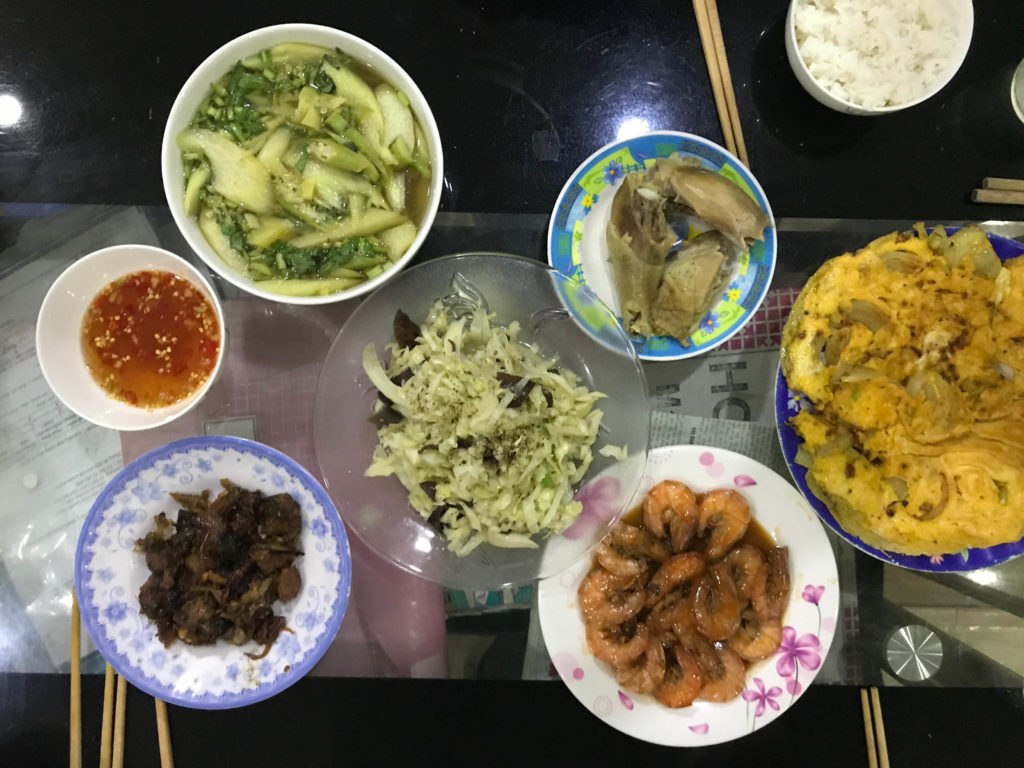
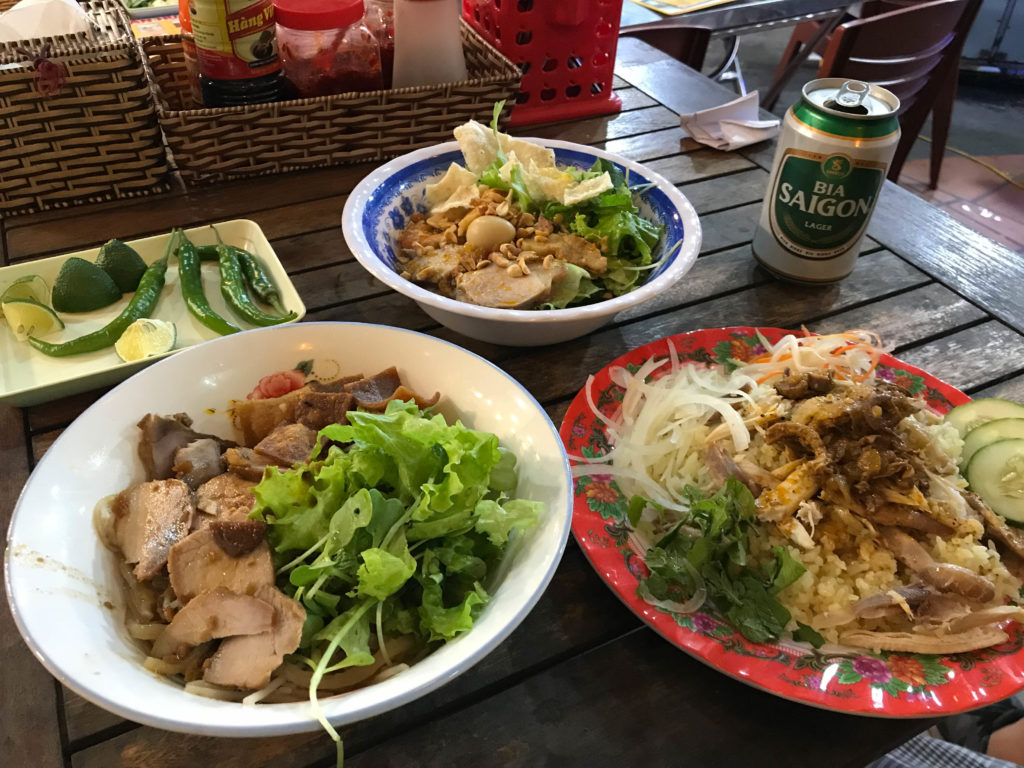
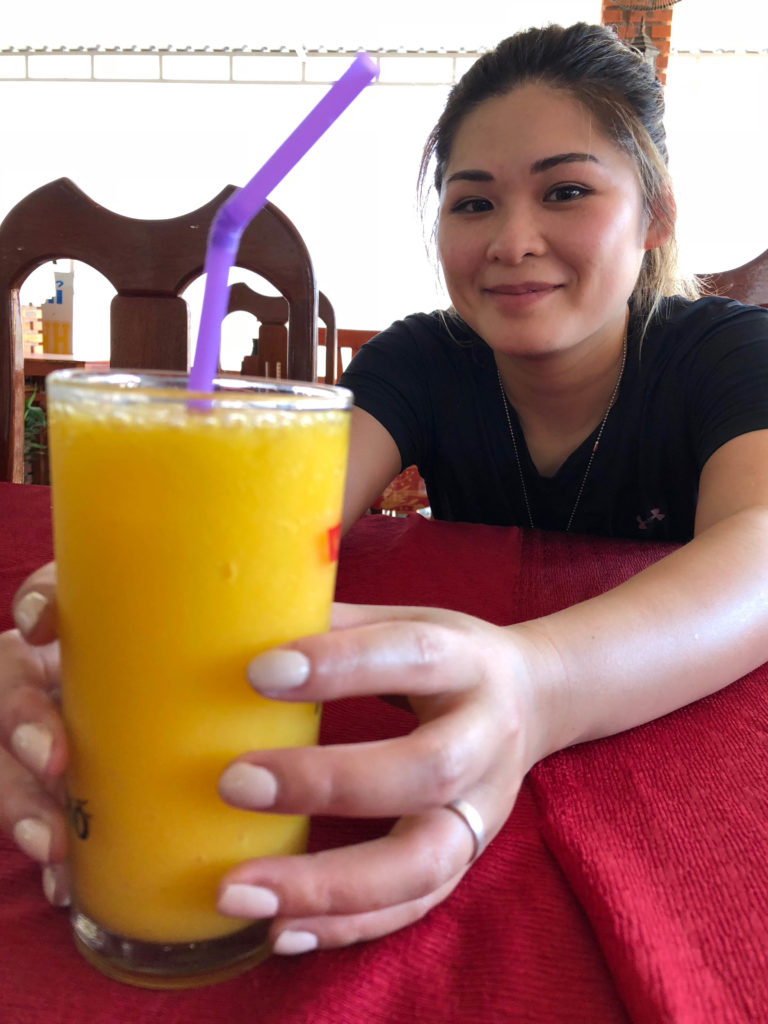
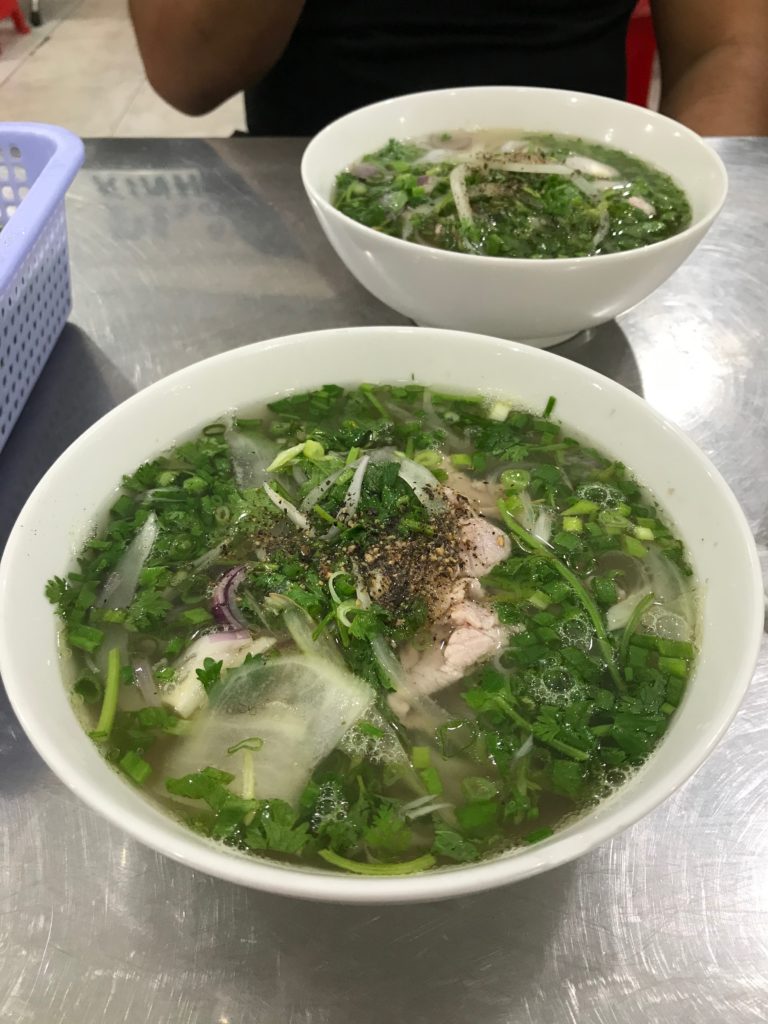
1 comment